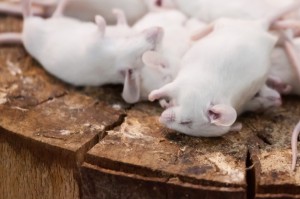Just a reminder that BPA-free plastic may be just as bad for you! It’s not that companies are purposefully misleading consumers, but rather a case of using a new, untested additive to replace BPA, but an additive with similar function. The replacement, BPS, is showing up in urine samples in 81% of Americans. Read more at Scientific American, also this post from earlier this year.
BGF – a possible safe alternative to BPA?
The alternatives to BPA in plastics (like BPS) are quite likely no better than BPA itself…but there’s a new substitute being developed which has the potential to truly offer a safe alternative. Bisguaiacol-F, or BGF, is made from a byproduct of the paper making industry called lignin. These lignin fragments are converted into a compound that has a similar shape as BPA (and thus predicted to have similar mechanical/thermal properties), but a different molecular structure to help ensure it doesn’t produce hormone-like responses in the body. More work remains, so the soonest we’d see BGF on the market is in five years or so. In the meantime, minimize the use of plastics in food and beverage storage and serving.
The risks of BPA-free plastic
After the BPA scare of a few years ago, consumers generally felt safe buying BPA-free plastic products. Well, I first reported on the risks of this last year, and now a new study warns of the dangers of these alternatives to BPA. The bottom line is that these new plastics pose similar risks as BPA (follow the link above, this one, and also this one for more information). My recommendation is the same – minimize your use of plastics in your food chain. Use stainless steel or glass where possible. Avoid aluminum water bottles too, as those are usually lined with plastic. Keep in mind that in the US at least, manufacturers aren’t required to demonstrate the safety of chemicals like these before they go on sale to the public.
BPA directly linked to cancer (in mice)
 BPA is one of those chemicals that has caused a lot of fear in recent years…but also some uncertainty. More and more though, it sounds like nasty stuff that’s best avoided (if possible). A new study found a direct correlation between BPA consumption and the rate of cancer in mice (read more about the study here). We’re lagging behind the rest of the world on this issue (the FDA still allows it), and unfortunately, its replacement, BPS, is pretty much an unknown, it may or may not have issues of its own. So what can you do? The same thing you do if you want to eat healthy overall. Avoid prepared and processed foods. Buy fresh ingredients and cook your own meals. At least try to minimize your exposure to BPA. You can read more about BPA over at Wikipedia.
BPA is one of those chemicals that has caused a lot of fear in recent years…but also some uncertainty. More and more though, it sounds like nasty stuff that’s best avoided (if possible). A new study found a direct correlation between BPA consumption and the rate of cancer in mice (read more about the study here). We’re lagging behind the rest of the world on this issue (the FDA still allows it), and unfortunately, its replacement, BPS, is pretty much an unknown, it may or may not have issues of its own. So what can you do? The same thing you do if you want to eat healthy overall. Avoid prepared and processed foods. Buy fresh ingredients and cook your own meals. At least try to minimize your exposure to BPA. You can read more about BPA over at Wikipedia.
BPS – the new BPA in plastics
We’ve all heard of the fuss regarding BPA in plastics. Perhaps a bit overblown, but a valid health concern nonetheless. The result is that it’s easy enough these days to find BPA-free plastics, but what does that really mean? In many products, BPA was replaced with BPS, and it’s really not that clear that BPS is any better than BPA. So, what can you do? Not much, but start by avoiding plastics in your food chain where possible. This means avoiding canned foods (the metal cans have plastic linings inside), avoid soda (for oh so many reasons!), avoid #3 and #7 marked plastics, choose BPA free lids for canning, and use glass water bottles. Ok, so that last one especially seems like a stretch, and I can’t see a glass water bottle being a good choice for an active outdoors lifestyle, but do keep in mind that even metal water bottles have a plastic liner inside.
